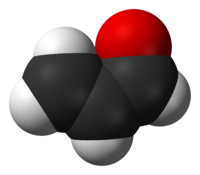
Photo from wikipedia
Abstract Membrane bioreactors (MBRs) are an alternative technology to achieve high quality effluent for water reuse for eucalyptus pulp and paper (P&P) industries, but membrane fouling is still a challenging… Click to show full abstract
Abstract Membrane bioreactors (MBRs) are an alternative technology to achieve high quality effluent for water reuse for eucalyptus pulp and paper (P&P) industries, but membrane fouling is still a challenging factor that restricts its application. This study aims to investigate characteristics of reversible and irreversible fouling of the submerged polyvinylidene fluoride (PVDF) MBR for treating eucalyptus P&P wastewater. Six batches of MBR experiments with different mixed liquor suspended solids (MLSS) concentrations were performed. The membrane cleaning protocol included three-steps: backwashing with DI water and subsequently NaOH solution, and then soaking with NaOCl solution, for which achieved 54.6 ± 11 %, 76.6 ± 10 % and 97.8 ± 2 % of flux recovery, respectively. Formation of a cake layer comprised of organic substance and soluble microbial products (SMPs), mostly polysaccharides and proteins, was the main contributor to flux decline of the MBR. Concentration of proteins in the irreversible foulant was found to be positively correlated with degree of membrane fouling. Using fluorescence excitation-emission matrix (EEM) with fluorescence regional integration (FRI) analysis revealed that, during MBR treatment, protein-like substances in the permeate water significantly decreased, simultaneously with the increase in relative proportions of humic-like and fulvic-like substances. Further analysis on the irreversible foulants showed that protein-like substances, including tyrosine-like and tryptophan-like substances, were disproportionately more important to membrane fouling than humic-like substances relative to their respective concentration in raw P&P wastewater.
Journal Title: Journal of environmental chemical engineering
Year Published: 2020
Link to full text (if available)
Share on Social Media: Sign Up to like & get
recommendations!